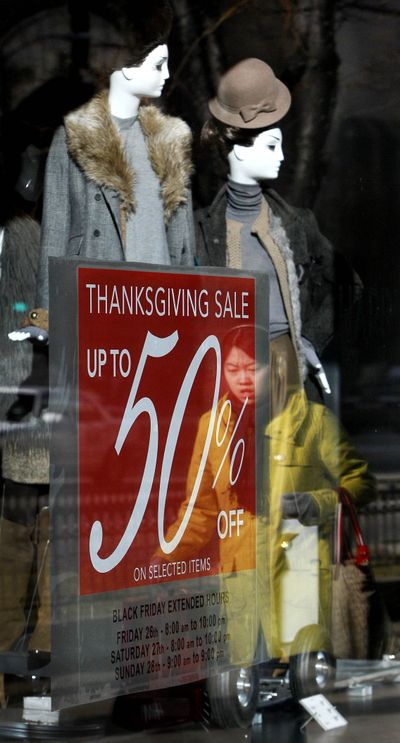Holiday uptick hopeful sign
Jump in retail sales is fifth consecutive

WASHINGTON – A strong start to the holiday season is raising confidence that the consumer is back and that 2011 could be a better year for the economy than expected.
Retail sales are rising, boosted by the best month for department stores in two years. Inflation remains tame. Businesses are restocking their shelves in anticipation of more consumer demand. And a survey of CEOs at America’s biggest companies suggests hiring will pick up in the next six months.
High unemployment remains a concern. The Federal Reserve singled out the nation’s 9.8 percent jobless rate Tuesday when it said it plans to maintain the pace of its $600 billion Treasury bond-buying program.
But the latest government data, combined with an emerging package of tax cuts and long-term unemployment benefits, are prompting economists to ramp up their forecasts for growth in the months ahead.
“We could be on the verge of a period of economic activity that will surprise everybody by how strong it is,” said Jonathan Basile, a vice president for economics at Credit Suisse Securities. “That tends to happen in recoveries when everything starts to ignite at the same time.”
Retail sales jumped 0.8 percent in November, the Commerce Department said Tuesday. It was the fifth straight monthly gain. Department stores led the way with a 2.8 percent gain, the biggest for this category since a 3 percent increase in November 2008.
Retailers have been particularly aggressive in their holiday sales promotions this year, putting many consumers in the mood to spend despite high unemployment and weak job gains. The holiday shopping season accounts for as much as 40 percent of annual revenue and profits for retailers.
“It seems there were Black Friday sales, pre-Black Friday sales and post-Black Friday sales,” said Joel Naroff, chief economist at Naroff Economic Advisers.
Best Buy Co., which decided against discounting as deeply as retailers such as Wal-Mart Stores Inc., ended up paying for it. The largest U.S. electronics chain said its quarterly net income, covering a three-month period ending Nov. 27, fell more than expected as it lost sales of TVs and laptops to competitors.
The Minneapolis-based chain also reduced its full-year outlook. Best Buy’s shares fell nearly 16 percent in mid-afternoon trading.
Other retailers got a boost not only from holiday sales but from the weather. A cold November, following two months of unseasonably warm weather, helped boost sales of coats and other winter gear in much of the country.
November’s better-than-expected sales figures are prompting many economists to revise their forecasts for consumer spending growth in the October-December quarter. Basile has upgraded his forecast by a full percentage point, to 3.2 percent from 2.2 percent, because of the retail data and last week’s report that the trade deficit narrowed in October.